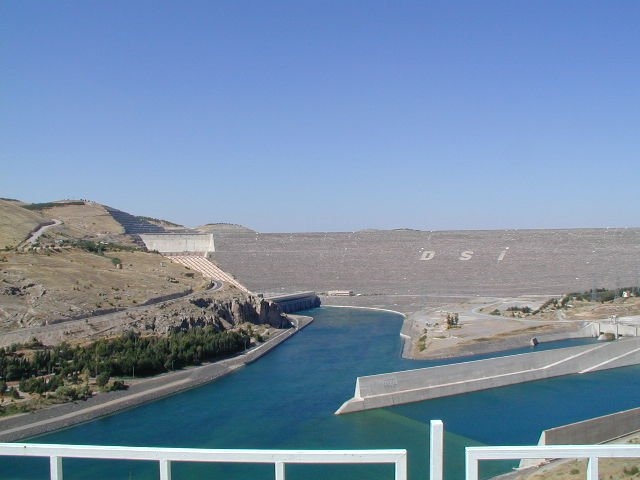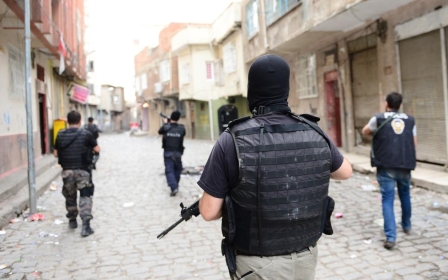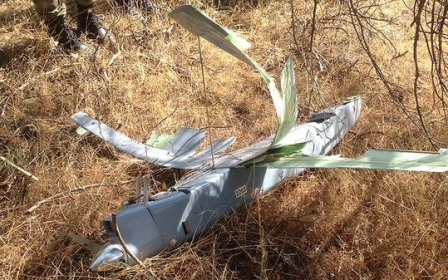ANALYSIS: Turkey’s forgotten economic project

SANLIURFA, Turkey - Based on the simple premise that prosperity can solve the region's problems - whether it's ethnic strife or anything else - Turkey embarked on an ambitious project from the 1980s onward to build a series of dams, irrigation networks, and industrial and transport infrastructure in the southeast of the country spanning the area between the Euphrates and Tigris rivers.
Decades later, its effect on the local populace remains open to debate.
Having spent millions of dollars on the Southeast Anatolia Project, GAP by its Turkish acronym, administrators say the infrastructure work is almost complete, but the uptick in violence between the government and the Kurdistan Workers’ Party (PKK) has dampened progress.
The success of the GAP has often hinged on political developments since it has been mostly been carried out at a time when the Turkish state has been involved in clashes with the PKK, which took up arms in 1984.
Although dams had been built in the region from the 1930s, it was only in 1980 that the entire project - which includes 22 dams, 19 hydroelectric grids, irrigation networks, and a vast transportation infrastructure in nine provinces - was integrated and brought under the single umbrella of the GAP, making it the biggest project embarked upon in Turkey’s modern history.
The project has come under intense criticism over the years; not least of which include environmental concerns, fears that historical artefacts are being destroyed in the name of progress, and worries that the project's implementation de-emphasises peace as a priority. In addition, several communities downstream have expressed concerns about water starvation.
The one uniting factor among both detractors and backers of the project, however, is the belief that the GAP does have the potential to contribute to peace and development in the region, which lags behind the most in Turkey in socio-economic terms.
According to Sadrettin Karahocagil, the president of the GAP Administration, the founding blocks for increased prosperity and peace have been laid and he says that work has been carried out regardless of the prevailing political situation.
“As a state institution we have continued our work down the years with our sole concern being the welfare of our citizens. Obviously we need to work with local institutions, whether they be municipalities or other bodies, and we have never differentiated between them along political lines,” said Karahocagil.
“We are just as happy to work with HDP (Peoples’ Democratic Party) affiliates such as the DBP (Democratic Regions Party) or anyone else as long as they are legitimate actors,” he said. “It is also up to them how much they want to cooperate with us.”
Mehmet Kaya, board director of the Diyarbakir-based Tigris Communal Research Centre, however, is wary of the state’s intentions and says although the GAP has great potential to be a peace project it would be wrong to call it that in its current shape.
“The entire focus has been on electricity generation and not on people’s welfare. If promises made about irrigation projects were kept it would have played a great role in increasing prosperity and thus laying the basis for peace,” Kaya told Middle East Eye.
“Only 17 percent of irrigation projects promised have become reality whereas in terms of electricity generation they are at 95 percent,” he said.
Karahocagil insists that ensuring the region’s electricity generation capability is vital for future growth in the region.
“We are setting up all these industrial zones to process agricultural produce and create added value. We need to be able to meet energy needs in that regard,” Karahocagil told MEE.
Kaya, though, says this excessive focus on energy generation just goes to show that the welfare of the people is not the main priority of those implementing the project.
In Kaya’s view, the two paths towards peace ultimately consists of democratisation and the silencing of weapons, and regional development where living standards are raised to acceptable norms.
“In terms of democratisation and ending violence we are faced with absolute failure and the current situation clearly shows that. Attempts at regional development have also been a failure because it never invested in people. How much development can you have if the people themselves are ignored and all the focus is on energy and other concerns,” said Kaya.
Controlling the water faucets
There are also fears that the damming of water as part of the GAP will result in even more acute water shortages for Iraq and Syria and could lead to increased international tensions.
Dismissing any criticism from countries such as Syria and Iraq, which lie down stream of the Euphrates and Tigris and see the waters from those two rivers as vital, Karahocagil says the GAP actually benefits those countries as well.
“The dams of the GAP mean that those countries are no longer subject to flash floods in the wet winter months and they receive water in a controlled manner.”
Omer Ozmen, who works at the GAP, also believes that those countries have indirectly benefitted from the project.
“In the past those countries often faced the risk of getting no water at all during dry spells since our farmers would divert all the water. But now since everyone is secure about water supply, they receive water even during the driest of times,” Ozmen told MEE.
Population displacement and submerging history
Another aspect of the GAP that has come in for fierce criticism is the displacement of the local population and the submersion of historical sites and artefacts under dam waters.
According to Kaya, the town of Hasankeyf that will be submerged under the waters of the Ilisu Dam – currently under construction - is a prime example of people being forced to migrate because they are uprooted from their homes, and also of a situation where scant regard is paid to the region’s historical heritage and all this in the name of progress, which doesn’t even benefit the local populace.
“The Ilisu Dam is purely for energy generation and has no immediate benefit for the locals in the area. Around 10,000 years of history is being sacrificed for electricity. It is difficult to call this development,” said Kaya.
Ozmen, a Mardin native, disagrees and says any relocation of people is done after consultations with them and that these projects provide clear and definite benefits to the region’s population.
“Of course we consult with the people potentially affected. And it isn’t like they are being relocated hundreds of kilometres away. They are moved just a few hundred metres from their current places,” said Ozmen.
Ozmen does admit that some historical sites and artefacts have, and continue to risk being submerged but says that realistically there is no other option as the entire region is covered in history.
Renewed violence spells death knell for tourism
In the sleepy and dusty historic town of Harran near the Syrian border, Halil Ozyavuz, an ethnic Arab in his mid-70s and who is the patriarch of a large extended family, is very grateful for the irrigation network that was introduced to the area in 1995. He says agriculture has kept the place alive and its youth have stayed put instead of migrating in search of employment after the drastic drop in tourism.
“It is thanks to these irrigation canals that we can grow most kinds of crops and therefore keep our young ones here,” Ozyavuz told MEE. “They mostly work as tourist guides but ever since the Syrian war, and then the clashes with the PKK, we don’t get any more tourists. Now they all work in the fields.”
It is an entirely different story in the hilly region of Mardin province where agriculture has never been a mainstay and the populace was thriving off a burgeoning tourism industry that was heavily promoting cultural and faith-based tourism in a province where members of various faiths and ethnicities have lived in close proximity for centuries.
Renewed violence between the state and PKK since July has dealt a heavy blow to the tourist industry that was beginning to blossom after a peaceful and hopeful climate had taken hold from the mid 2000s onwards.
Esra Sirin, operations manager at the Erdoba Evleri hotel chain, which has five hotels in Mardin, says the situation has become so bad that they have shut down four of their locations and only keep one open.
“We had no other choice. September through November is peak season for us and instead of the usual 75 percent occupancy rate for September it was only 15 percent. It is not looking better for October and November either,” Sirin told MEE.
Sirin, who moved to Mardin five years ago from the central Anatolian tourist region of Cappadocia sensing the immense promise tourism in this region, says the size of their enterprise currently allows them to keep afloat but that smaller enterprises are already shuttering doors.
“Although we manage by closing some of our hotels, smaller investors have gone bankrupt and have had to wind up. Even for us it is not ideal because our staff no longer enjoy job security. We can’t guarantee them that their positions will remain available,” she said.
“This region possesses great cultural and natural beauty. I hope we have peace again so that more people can enjoy it.”
Note: The state-run GAP Administration provided travel and accommodation for the trip to the region.
New MEE newsletter: Jerusalem Dispatch
Sign up to get the latest insights and analysis on Israel-Palestine, alongside Turkey Unpacked and other MEE newsletters
Middle East Eye delivers independent and unrivalled coverage and analysis of the Middle East, North Africa and beyond. To learn more about republishing this content and the associated fees, please fill out this form. More about MEE can be found here.




